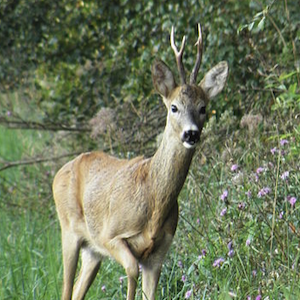Habitat selection of the roe deer Capreolus capreolus (Artiodactyla, Cervidae) in an agroforestry system

All claims expressed in this article are solely those of the authors and do not necessarily represent those of their affiliated organizations, or those of the publisher, the editors and the reviewers. Any product that may be evaluated in this article or claim that may be made by its manufacturer is not guaranteed or endorsed by the publisher.
Authors
The present study aimed at assessing the habitat preferences of the most widespread and abundant ungulate in Italy, the roe deer, in the Vallevecchia protected area (Venice). This area has been the object of naturalistic management and continuous environmental improvements in the last decades. Currently, the area is characterized by a high habitat heterogeneity, including deciduous woodlands, pine forests, wetlands, and farmlands. The study was carried out during the summers of 2017 and 2020. Data were collected along standardized transects, and the geo-localized records were divided into the corresponding habitats to calculate the Jacobs Index. In addition, chi-square test was applied, with the calculation of Pearson residuals to estimate the significance of associations to the habitats. The analyses show that in Vallevecchia the roe deer prefers woods and permanent meadows. Conversely, this ungulate avoids pine forests, wetlands and farmlands, despite their potential as sources of food and shelter. In line with other studies on agroforestry systems, wooded areas were most likely preferred because they provide shelter from disturbing factors and thermal stress, while meadows were likely chosen for trophic reasons. In this respect, we point out that in the studied area the preference for meadows was most likely due also to the availability of sprouts all year round, deriving from the constant mowing activities implemented in this habitat. In addition, our investigation underlines that the roe deer normally avoids maize and wheat crops, in accordance with similar studies. Moreover, the analyses highlight the preference for farmlands only if woods and grasslands are not present in the adjoining areas. Conversely, the proximity of these habitats results in a low impact on crops. In addition to encouraging the enforcement of current management actions in Vallevecchia, our results represent a contribution to a more effective management of the roe deer in agroforestry systems, aimed at limiting its impact in anthropized contexts and at achieving the conditions for a better coexistence of this deer with human activities.
How to Cite

This work is licensed under a Creative Commons Attribution-NonCommercial 4.0 International License.
PAGEPress has chosen to apply the Creative Commons Attribution NonCommercial 4.0 International License (CC BY-NC 4.0) to all manuscripts to be published.










